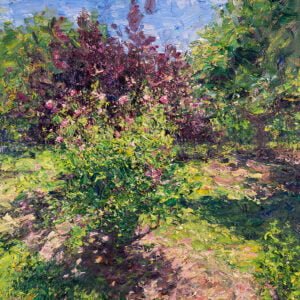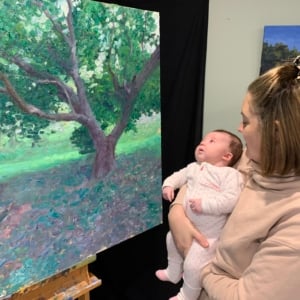I’ve been a big fan of the palette knife lately. Both New Zealand, Stroll in the Park and Sierra Nevada were painted almost entirely with palette knives.


In light of this, I put together some tips to help you successfully utilize the palette knife in your own paintings:
⁃ Pick up several, unmixed colors on your palette knife to create multicolored strokes. You can get a lot done with a single stroke. Look at the Russian impressionists for inspiration.
⁃ Palette knife paintings are best when there’s a touch of finesse involved. Finesse comes with experience. Your first palette knife painting will probably appear clumsy and obtuse. But you will improve as you become more familiar with the tool.
⁃ Combine palette knife strokes with brushwork. A few dabs with a brush can add an interesting dynamic to a palette knife painting (and vice versa).
⁃ Don’t skimp on your palette knives. Look for ones with a firm, responsive flex and a fine edge.
⁃ Sometimes it’s more effective to scrape paint away than apply more paint.
⁃ Vary your strokes in terms of pressure, thickness of paint, angle, energy, etc. Don’t get caught up using the same stroke over and over again.
⁃ You can create some interesting effects by dragging a loaded palette knife over a dried surface.
⁃ You can use any part of the palette knife, not just the long edge.
⁃ Be wary of unusual-looking palette knives. The standard ones are fine for almost all situations.
⁃ Don’t forget to wipe down your palette knives at the end of a session… (This is more of a reminder to myself…)
⁃ Get an oversized palette knife for scraping down your palette.
⁃ Use more detail and contrast around your focal points (smaller palette knives). Simplify the rest (larger palette knives).
If you want more tips, pick up a copy of my 21 Easy Ways to Improve Your Paintings ebook.
Happy painting!
Dan Scott
drawpaintacademy.com






